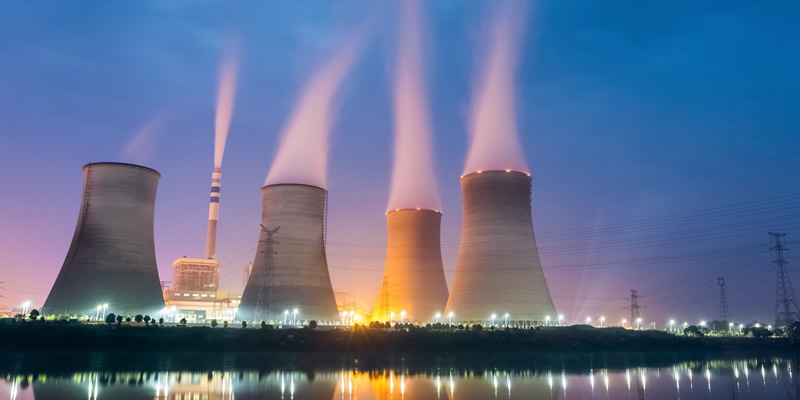A long term solution to the Abrasion & Wear problem
Abstract:
Globally, governments are becoming increasingly concerned about the air we breathe. Regulatory agencies are aggressively implementing air pollution control (APC) standards, which require sophisticated scrubbing equipment for flue gases emitted by energy generating boiler systems.
The world is indeed waking up to the need to protect the air we breathe as a scarce resource for generations to come.
One area that has received a considerable amount of attention is the concern about the potential for acid rain that results from the generation of sulphur dioxide (SO2) and nitrogen oxides (NOx) during the combustion of fossil fuels. Particularly notable are the programs on flue gas desulfurization (FGD) technologies that have been ongoing in a number of countries for several years.
At power plants, flue gas is often treated with a series of chemical processes and scrubbers, which remove pollutants. Fossil fuels such as coal and oil contain a significant amount of sulphur. When fossil fuels are burned, about 95 percent or more of the sulphur is generally converted to sulphur dioxide (SO2). Such conversion happens under normal conditions of temperature and of oxygen present in the flue gas.
Electrostatic precipitators or fabric filters remove particulate matter and flue-gas desulfurization captures the sulphur dioxide produced by burning fossil fuels, particularly coal.
Lime or limestone slurry, used as a scrubbing media, is abrasive and often contains small amounts of chlorides and fluorides which can cause severe corrosion in metal piping. FRP is the overwhelming choice for this application since it is resistant to abrasion and corrosion.
Flue-gas desulfurization (FGD):
Flue gas desulfurization is commonly known as FGD and is the technology used for removing sulphur dioxide (SO2) from the exhaust combustion flue gases of power plants that burn coal or oil to produce steam for the turbines that drive their electricity generators. The most common types of FGD contact the flue gases with an alkaline sorbent such as lime or limestone.
Most FGD systems employ two stages: one for fly ash removal and the other for SO2removal. Attempts have been made to remove both the fly ash and SO2 in one scrubbing vessel. However, these systems experienced severe maintenance problems and low removal efficiency. In wet scrubbing systems, the flue gas normally passes first through a fly ash removal device, either an electrostatic precipitator or a wet scrubber, and then into the SO2 absorber. However, in dry injection or spray drying operations, the SO2 is first reacted with the sorbent, and then the flue gas passes through a particulate control device.
As sulphur dioxide is responsible for acid rain formation, stringent Environmental protection regulations have been enacted in many Countries to limit the amount of sulphur dioxide emissions from Power plants and other industrial facilities.
FGD is a set of technologies used to remove sulphur dioxide (SO2) from exhaust flue gases of fossil-fuel power plants, and from the emissions of other sulphur oxide emitting processes.
Due to the corrosive nature of the scrubbing process, the selection of the MOC is vital to Successful operation of the power plant.
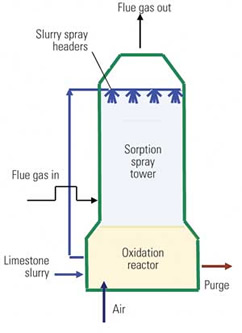
FRP as the preferred material:
A variety of materials have been successfully used in wet FGD systems including rubber lined carbon steel, flake glass filled epoxy vinyl ester resins, high nickel alloy clad carbon steel, nickel based alloys, and Fiberglass Reinforced Polymers (FRP) that are based on epoxy vinyl ester resins and epoxy novolac vinyl ester resins.
FRP was selected as the preferred material of construction based on the cost-effectiveness, ease of installation and performance under the severe conditions created during the scrubbing process. One of the many advantages of using FRP is that they can be formulated to be corrosion resistant. The type and thickness of this corrosion barrier/liner will depend upon the specific service environment. Corrosion resistance of FRP is a function both of resin content and the specific resin used in the laminate. Generally speaking, the higher the resin content, the more corrosion resistant the laminate. To increase the abrasion resistance of composite minerals in correct combination is added as filler in right proportion.
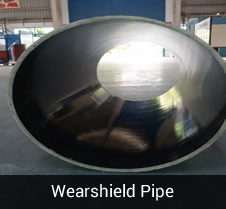
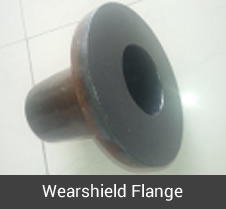
Features:
1. Excellent Wear Resistance demonstrated in high speed slurry conveying processes
2. Maintains the corrosion resistance feature of FRP composite pipes
3. WearShield pipes weigh as little as 1/6th of steel pipes & 1/20th of concrete pipes.
4. Ability to design seamless inner surfaces for trouble free flow over long distances.
5. Demonstrated to provide superior benefits in flue gas desulfurization (FGD) systems and in abrasion slurry conveying application.
Application:
1. For coal fired power plants in conveying of coal ash slurry.
2. For limestone slurry which is used in flue gas desulfurization (FGD) systems, where it reacts with the flue gas thus removing the SO2.
3. Inner lining of FGD
4. Spray bank and other spray system in absorber.
CUMI WEARSHIELD:
To address to these market and provide a long term solution to Power industries especially those using Coal as a fuel, CUMI with its own technical expertise and with its Technology provider in USA provides a total solution for Handling slurries and Ash in FGD in particular and Power plant in general.
Benefits of Corrosion & Wear resistant composite (CUMI WearShield) pipes for chemical process industries.
1. Smooth seamless interiors for trouble free conveying of powders, slurries and liquids.
2. Demonstrated to enhance life of structures such as Flue gas Desulphurisation (FGD) units, effluent treatment systems & fly ash conveying systems in power industries
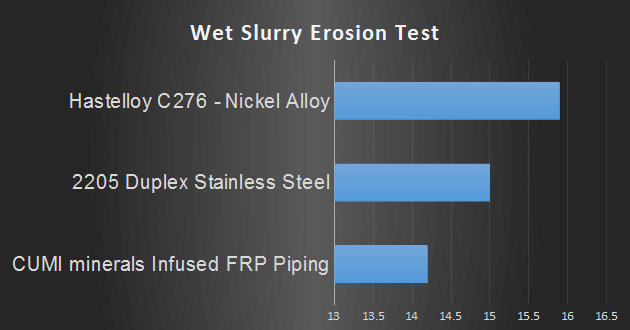
Conclusion:
Fly Ash and other abrasive slurries can now be handled with FRP piping and tanks through the introduction of fine particles of minerals into our standard corrosion barrier.
The minerals incorporated in a corrosion barrier layer can be of various thickness. This combines abrasion resistance with the proven corrosion resistance of the thermoset resin used.
This Process was developed through extensive research and development and in technical collaboration of a US Company to solve the abrasion problems en-countered while handling abrasive slurries especially in Flue gas desulphurisation process and other similar application and is performing exceptionally well.


